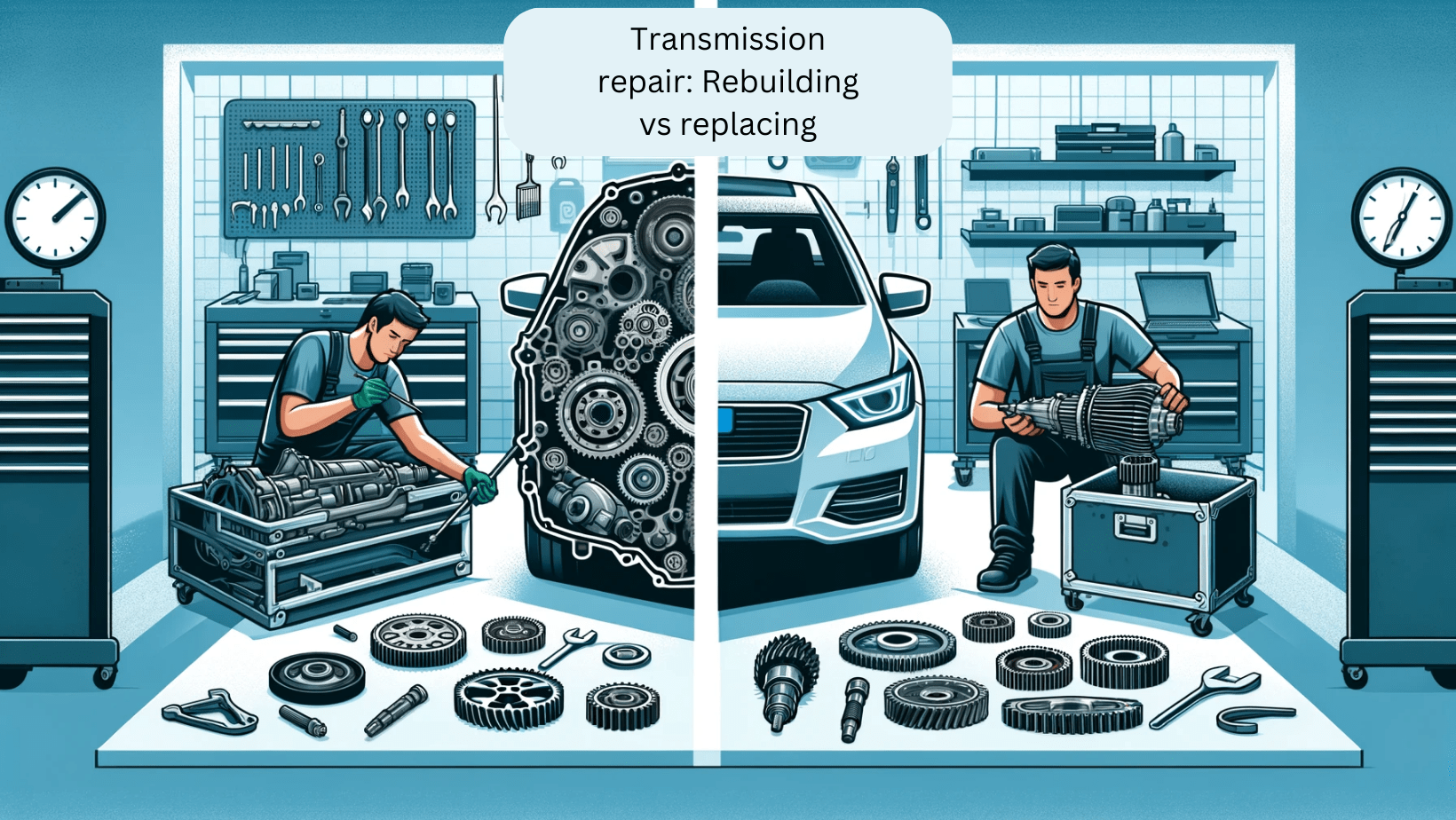Table of Contents
Rebuilding vs Replacing A Transmission
Introduction
Transmission failure is a costly and critical issue, and when faced with the decision to rebuild or replace, vehicle owners must consider factors such as cost, longevity, performance, and environmental impact. Each option has its own benefits and drawbacks, making the choice highly dependent on the vehicle’s age, condition, and specific needs.
Key Takeaways
| Rebuilding | Replacing |
|---|---|
| Cost-effective in the long run | Initially less time-consuming |
| Customizable to specific vehicle needs | May involve compatibility issues |
| Better for unique or older models | Newer components could extend lifespan |
| Lengthier process | Quick solution, but not always durable |

Rebuilding vs Replacing A Transmission
Rebuilding a transmission involves disassembling, inspecting, and replacing worn-out parts while keeping the transmission’s original housing and structure. This method restores the transmission to its optimal working condition while offering opportunities for performance upgrades.
When to Consider Rebuilding?
✔ Vintage Charm – Ideal for classic or rare vehicles where maintaining originality is essential.
✔ Customization – Allows performance tweaks tailored to specific driving needs.
✔ Cost-Effectiveness – Though initially more expensive, rebuilding can save money long-term by preventing recurring failures.
In-Depth Analysis
A transmission rebuild is not just about swapping out broken components—it involves fine-tuning the system to match or exceed the original performance. It requires skilled labor, making it a lengthier and sometimes more costly process.
Choosing to Replace: A New Horizon
Replacing a transmission typically involves installing a new, used, or remanufactured unit. While faster and often simpler, this option can present challenges in compatibility and quality assurance.
Why Opt for Replacement?
✔ Time Constraints – If you need your vehicle running quickly, a replacement is the faster option.
✔ New Technology – A newer unit may include upgraded parts that improve performance and efficiency.
✔ Warranty Coverage – Many new or remanufactured transmissions come with a warranty, providing peace of mind.
Quick Look
While replacing a transmission might seem like the easiest route, not all replacement units are equal. Compatibility issues, part quality, and software mismatches can arise, leading to unexpected problems.
The Impact on Performance and Longevity
Regardless of the choice, performance and longevity remain top considerations. Rebuilt transmissions can be fine-tuned for efficiency, while newer replacements integrate advanced engineering for improved durability.
Performance Considerations
✔ Rebuilds – Offer the potential for performance enhancements using high-quality aftermarket parts.
✔ Replacements – Deliver consistent performance, but the outcome depends on the unit’s build quality.
Longevity Expectations
✔ Rebuilds – If done correctly, a rebuild can last longer than a factory replacement due to the use of custom, upgraded parts.
✔ Replacements – The lifespan varies widely, depending on whether the transmission is new, used, or remanufactured.
Financial Implications and Environmental Considerations
The decision between rebuilding and replacing a transmission impacts both your wallet and the environment.
Cost Analysis
| Factor | Rebuilding | Replacing |
|---|---|---|
| Initial Cost | Higher due to labor and parts | Lower upfront cost |
| Long-Term Savings | Better due to customization and improved durability | May incur future costs if replacement fails prematurely |
While replacement seems cheaper upfront, rebuilding often proves more cost-effective over time by eliminating the need for frequent fixes or new transmission swaps.
Eco-Friendly Aspect
✔ Rebuilding – A more sustainable choice, as it reduces waste and conserves materials.
✔ Replacing – Involves discarding an old transmission, leading to more environmental waste but potentially offering better fuel efficiency with modern technology.
Final Thoughts: Making the Right Choice
The decision between rebuilding and replacing a transmission depends on several factors:
✔ For older or unique vehicles, rebuilding may be the best option to maintain authenticity and performance.
✔ For quick and simple fixes, replacing is the faster route, provided a quality transmission is used.
✔ For long-term savings, rebuilding is often the more economical choice.
Both options have their benefits and trade-offs, but choosing wisely ensures better vehicle performance, longevity, and cost-efficiency.
Additional Resources
Check out the best performance car gear available on the market.
